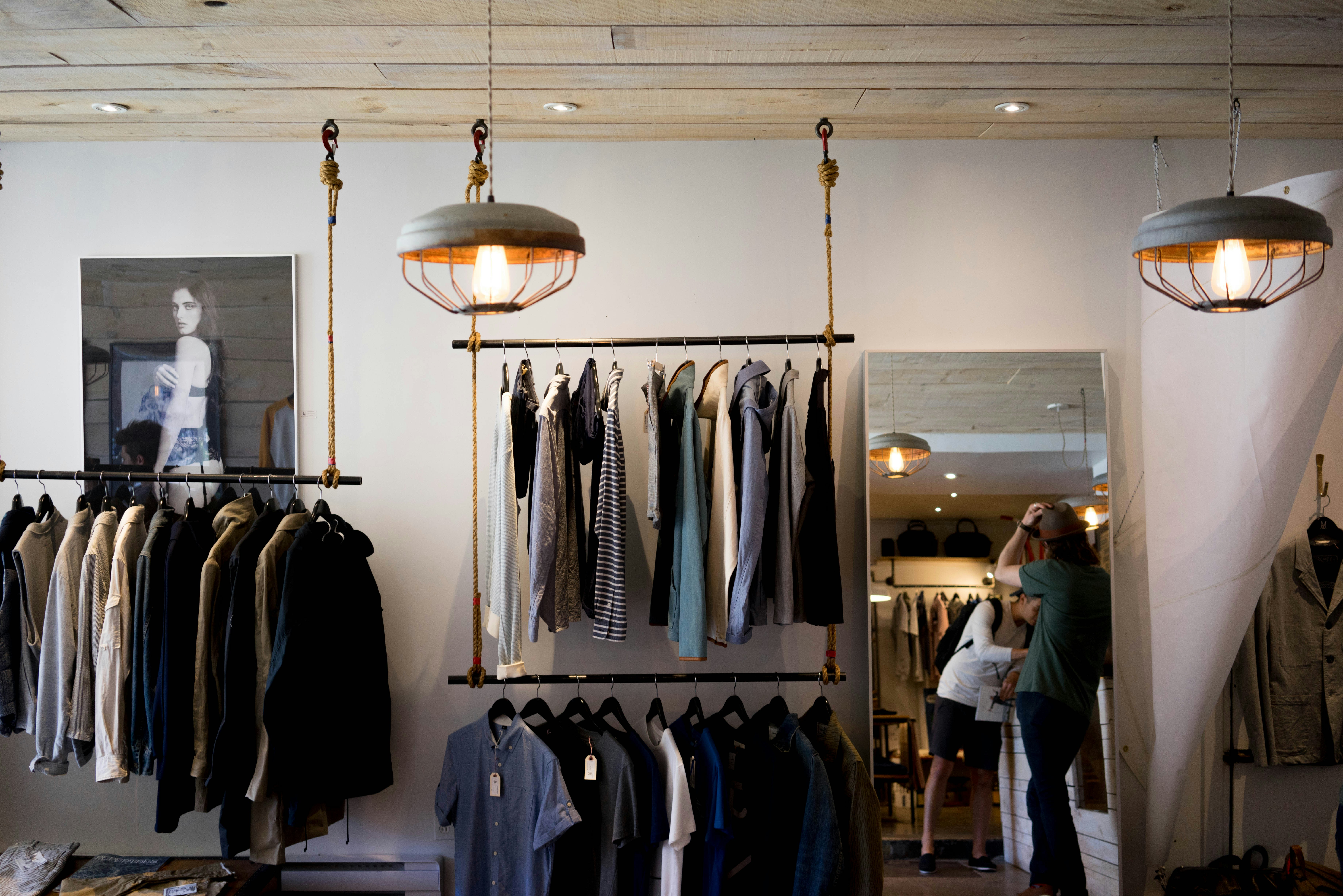Looking to invest in a new pair of binoculars but unsure which ones to choose? Well, look no further! In this article, we will explore the world of binoculars and help you find the perfect pair for your needs. Whether you’re an avid birdwatcher, a nature enthusiast, or simply want to enhance your outdoor adventures, we’ve got you covered. So sit back, relax, and let’s discover the best binoculars to buy for an unforgettable visual experience.
Understanding the Basics of Binoculars
Binoculars are optical devices that are used to magnify distant objects and bring them closer to your eyes. They work on the principle of two parallel aligned telescopes that provide a magnified image to both of your eyes simultaneously. This allows for a three-dimensional perception of the observed object.
How do Binoculars work?
Binoculars use a combination of lenses and prisms to magnify and focus the light from the object you’re looking at. The objective lens at the front of the binoculars collects light and forms an image. This image then passes through the prism system, which redirects the light and flips it right-side up. Finally, the ocular lens magnifies the image and brings it to your eyes, allowing you to see distant objects with clarity.
Importance of Magnification and Field of View
When choosing binoculars, two important factors to consider are magnification and field of view. Magnification determines how much closer the object will appear, while field of view refers to the width of the area you can see through the binoculars. It’s crucial to find a balance between magnification and field of view, as a higher magnification may reduce the field of view, making it harder to locate objects.
Different parts of Binoculars
To understand binoculars better, let’s look at their different parts. The body or housing of binoculars is usually made of metal or plastic and holds all the components together. The objective lens is the front lens that gathers light, while the ocular lens is the lens closest to your eyes. Binoculars also have a focusing wheel or knob, which adjusts the focus to make the image appear sharper. Additionally, there may be diopter adjustment rings for each eyepiece, which allow you to compensate for any difference in vision between your eyes.
Types of Binoculars
Binoculars come in various types, each designed for specific purposes. Let’s explore some of the most common types:
Roof Prism Binoculars
Roof prism binoculars are known for their sleek and compact design. They have straight barrels and the prisms inside are aligned in a straight line, allowing for a slim profile. Roof prism binoculars are popular for outdoor activities and general use due to their portability and durability.
Porro Prism Binoculars
Porro prism binoculars have a traditional and recognizable design. They feature an offset prism construction, with the objective lens and eyepiece lenses not being in a straight line. This design provides a wider field of view and is often favored by birdwatchers and nature enthusiasts.
Marine Binoculars
Marine binoculars are specifically designed to withstand harsh weather conditions and are often waterproof and fog-proof. They are ideal for boating, fishing, and other marine activities, offering a clear view even in wet or humid environments.
Birding Binoculars
Birding binoculars are optimized for observing birds in their natural habitats. They usually have a wide field of view and excellent clarity, allowing you to spot and identify birds from a distance. Light and compact birding binoculars are preferred for long hours of birdwatching.
Hunting Binoculars
Hunting binoculars are designed with features that cater to the needs of hunters. They often have a camouflage exterior to blend in with the surroundings and may offer enhanced low-light performance. Hunting binoculars with higher magnification can help identify targets more accurately.
Astronomy Binoculars
Astronomy binoculars are specially designed for stargazing and observing celestial objects. With larger objective lenses and lower magnification, they provide a wider field of view, making them ideal for scanning the night sky. Astronomy binoculars are a great choice for beginners and can complement a telescope for a comprehensive viewing experience.
Key Features to Consider
When choosing binoculars, there are several key features to consider. These features can significantly impact your overall experience and the performance of the binoculars. Here are some important factors to keep in mind:
Lens quality
The quality of the lenses used in binoculars directly affects the image clarity and brightness. Look for binoculars with multi-coated lenses, as they minimize reflections and enhance image quality. High-quality lenses ensure a sharp and vibrant image, even in challenging lighting conditions.
Magnification strength
The magnification strength determines how much closer the object will appear. Higher magnification may seem enticing, but it also narrows the field of view and makes image stabilization more challenging. Consider the intended use of the binoculars and choose a magnification strength that suits your needs.
Field of view
The field of view refers to the width of the area you can see through binoculars. A wider field of view allows you to observe larger areas and track moving objects more easily. It is especially important for activities such as birdwatching and sports.
Ease of focus
An easily adjustable focus mechanism is essential for comfortable and convenient use. Look for binoculars with a smooth focusing wheel that allows for quick and precise adjustments. It should be easy to focus with one hand while keeping the binoculars stable.
Weight and Size
Consider the weight and size of the binoculars, especially if you plan to carry them for extended periods. Lighter and compact binoculars are more comfortable to use and carry around. However, keep in mind that larger objective lenses may result in heavier binoculars but offer better low-light performance.
Resistance to Water and Fog
If you plan to use binoculars in wet or humid environments, make sure they are waterproof and fog-proof. This ensures their durability and prevents moisture build-up, which can obstruct your view. Look for binoculars with a nitrogen or argon purging to guarantee internal fog-free performance.
Best Binoculars for Specific Users
Finding the best binoculars for your specific needs can enhance your overall experience. Let’s explore some recommendations for different user categories:
Best for Bird Watchers
Birdwatchers need binoculars with excellent clarity, wide field of view, and a lightweight design. Consider binoculars with a magnification range between 7x and 10x and a compact size for portability. Some popular options for birdwatchers include the Nikon Monarch 7, Vortex Optics Diamondback, and Zeiss Terra ED.
Best for Hunters
Hunters require binoculars with enhanced durability, good low-light performance, and a suitable magnification range for target identification. Look for binoculars with a magnification range between 8x and 10x, depending on your hunting style. The Vortex Optics Viper HD, Leupold BX-4 Pro Guide HD, and Swarovski EL Range are well-regarded choices for hunters.
Best for Astronomers
Astronomy binoculars need to provide a wide field of view, good light-gathering capabilities, and comfortable long-duration viewing. Binoculars with a low magnification range, typically between 7x and 10x, are preferred. The Celestron SkyMaster Giant 15×70, Orion Scenix 7×50, and Nikon Aculon A211 10×50 are popular choices for beginner astronomers.
Best for Sports Enthusiasts
Sports enthusiasts require binoculars with a wide field of view, good image stabilization, and a durable build. Consider binoculars with a magnification between 8x and 12x for sports events. The Nikon Action EX, Bushnell Legend Ultra HD, and Steiner Sports Auto-Focus binoculars are recommended for sports enthusiasts.
Best for Children
When choosing binoculars for children, prioritize ease of use, durability, and a lightweight design. Look for binoculars with a lower magnification range, typically around 6x, to make it easier for children to find and focus on objects. The Celestron Kids 6×21, Bushnell PowerView 8×21, and Nikon Trailblazer 6×21 are suitable options for children.
Review Top Binocular Brands
Several reputable brands manufacture high-quality binoculars. Let’s take a closer look at some of the top binocular brands:
Nikon
Nikon is a well-known brand in the optics industry, offering a wide range of binoculars suitable for various activities. Nikon binoculars are known for their excellent image quality, durability, and innovative features. With a long-standing reputation, Nikon continues to be a trusted choice for many users.
Bushnell
Bushnell is a popular brand that caters to a wide range of budget and performance needs. Their binoculars are known for their affordability and reliability. Bushnell offers a diverse lineup with models suitable for different activities, from entry-level options to high-end binoculars.
Celestron
Celestron is known for its expertise in astronomy equipment, but they also produce binoculars for general use. Celestron binoculars often combine affordability with good performance, making them a popular choice for amateur astronomers and nature enthusiasts.
Leica
Leica is renowned for its precision and high-quality optics. Leica binoculars are known for their exceptional clarity, image brightness, and rugged construction. With their commitment to craftsmanship and innovation, Leica binoculars are favored by professionals and enthusiasts alike.
Zeiss
Zeiss is synonymous with optical excellence and is highly regarded for its precision engineering. Zeiss binoculars are known for their outstanding optics, durability, and sleek design. Their binoculars offer exceptional image quality and are often favored by professionals and serious enthusiasts.
Detailing Optimum Binoculars for every Budget
Binoculars are available at various price points, making it possible to find a suitable option within your budget. Here are some recommendations for binoculars based on different price ranges:
Best Binoculars under $100
For those on a tight budget, there are still good options available. The Nikon ACULON A30, Bushnell Falcon 10×50, and Celestron Outland X 10×42 are all affordable choices that offer decent performance within this price range.
Best Binoculars under $200
With a slightly higher budget, you can find binoculars with improved image quality and additional features. The Vortex Optics Diamondback 10×42, Leupold BX-1 McKenzie, and Nikon Prostaff 7s 8×42 perform well in this price range.
Best Binoculars under $500
If you’re willing to invest a bit more, you can expect higher quality optics and enhanced durability. The Swarovski CL Pocket 8×25, Zeiss Terra ED 10×42, and Leica Trinovid 8×42 are all reputable choices within this price range.
Best High-end Binoculars
For those seeking the pinnacle of optical quality, high-end binoculars offer exceptional performance. The Swarovski EL 8.5×42, Zeiss Victory HT 10×42, and Leica Noctivid 10×42 are premium choices that deliver uncompromising image quality and durability.
Inspecting Special Features
Some binoculars offer additional features that can enhance their usability in specific situations. Let’s explore a few notable special features:
Image Stabilization
Binoculars with image stabilization technology help compensate for hand movements and provide a steady view, even at high magnifications. This feature is especially useful for activities such as birdwatching, sailing, or any other situation where a stable image is essential.
Zoom capability
While most binoculars have a fixed magnification, there are zoom binoculars available that allow you to adjust the magnification level. This versatility can be advantageous in situations where the distance to the object varies.
Night Vision
Night vision binoculars use technology to amplify low levels of ambient light, allowing you to see in the dark. They are commonly used for wildlife observation, surveillance, or any activity that requires visibility in low-light conditions.
Rangefinder capability
Rangefinder binoculars integrate distance-measuring capabilities, making them useful for activities such as hunting or golfing. This feature allows you to accurately measure the distance between you and a target.
Maintenance and Care of Binoculars
Proper maintenance and care of your binoculars can prolong their lifespan and ensure optimal performance. Here are some essential maintenance tips:
Proper Storage
Store binoculars in a dry and well-ventilated area, preferably in a case or pouch to protect them from dust, moisture, and accidental damage. Avoid exposing them to extreme temperatures or direct sunlight, as these can affect the integrity of the lenses and coatings.
Cleaning and Handling
Clean your binoculars regularly using a soft, lint-free cloth or a brush. Use a cleaning solution specifically designed for lenses and apply it gently. Avoid touching the lenses with your fingers, as fingerprints can smudge the image quality. When not in use, handle the binoculars with care, avoiding unnecessary jolts or impacts.
Repair and Servicing
If your binoculars require repairs or servicing, it’s best to consult a professional. Attempting to fix them yourself may cause further damage. Many manufacturers offer service centers where you can send your binoculars for maintenance or repairs. Regular servicing can help identify and rectify any potential issues before they escalate.
Binocular Accessories
Several accessories can enhance your binocular experience and protect your investment. Here are a few popular accessories:
Carrying Cases
A carrying case provides protection and easy portability for your binoculars. Look for a case with padding and a secure closure mechanism to keep your binoculars safe during transportation.
Neck Straps
A comfortable neck strap helps distribute the weight of the binoculars evenly, allowing for extended use without strain. Adjustable straps with a quick-release mechanism provide convenience and security.
Lens Covers
Lens covers protect the objective and ocular lenses from dust, scratches, and accidental damage. Some binocular models may come with lens covers, but if not, you can purchase them separately to ensure proper protection.
Cleaning Kits
A specialized cleaning kit designed for binoculars can help you maintain the cleanliness of the lenses. These kits typically include a cleaning solution, lint-free cloths, brushes, and other accessories necessary for safe and effective cleaning.
How To Buy The Best Binoculars
Here are some important steps to consider when purchasing binoculars:
Choose the type suitable for your need
Consider the activities you plan to use the binoculars for and choose the appropriate type accordingly. If you’re unsure, opt for versatile binoculars that can handle a range of activities.
Decide on your budget
Determine how much you’re willing to spend on binoculars. Having a budget in mind will help narrow down your options and focus on finding suitable models within that price range.
Test different binoculars
Visit a store that specializes in optics and try out different binocular models. Testing them allows you to assess the feel, weight, and comfort of each pair and see the image quality firsthand.
Read customer reviews
Take advantage of online resources to read customer reviews and gather feedback from other users. Their experiences and insights can provide valuable information to aid in your decision-making process.
Buy from trusted sellers
To ensure the authenticity and quality of the binoculars, purchase from authorized and reputable sellers. This reduces the risk of receiving counterfeit or inferior products.
By following these steps, you can confidently select the best binoculars that suit your needs and preferences.
In conclusion, binoculars are essential tools for observing distant objects with clarity and detail. Understanding the basics of binoculars, the different types available, and the key features to consider helps in making an informed decision. Whether you are a bird watcher, hunter, astronomer, sports enthusiast, or simply looking for binoculars for children, there are options available to cater to your specific needs. Top brands like Nikon, Bushnell, Celestron, Leica, and Zeiss offer a wide range of binoculars to choose from, ensuring that you find the perfect pair within your budget. Taking proper care of your binoculars, utilizing accessories, and following maintenance guidelines will ensure their longevity. So go ahead, explore the world with enhanced vision, and enjoy the wonders that binoculars have to offer.



